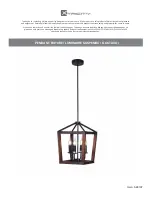
Safety instructions
9/56
3 842 558 372/2021-10, MIT: EL 2,
Bosch Rexroth AG
• Before start-up, make sure that all seals and caps for the plug-in connections
are correctly installed and undamaged in order to prevent fl uids and debris from
infi ltrating the product.
• Allow the product to acclimatize for a few hours prior to start-up in order
to prevent water condensation from forming in the housing.
• Make sure that all electrical and pneumatic connections are either in use
or covered.
• Check the safety requirements according to DIN EN 619.
• Only start up a product that has been completely installed.
• Make sure that all the safety equipment belonging to the product is present, has
been properly installed, and is fully functional. Do not move, bypass or disable
any safety equipment.
• Do not reach into moving parts.
• Check the product for malfunctions.
• Make sure that only authorized personnel perform the following tasks within the
scope of the product’s intended use:
– starting or operating the system, or interfering with its normal operation.
– operating adjustment devices on components or parts.
• Only allow people to be in the immediate vicinity of the product when it is
operating if they are authorized by the operator to be there. This also applies
when the product is idle.
• Make sure that:
– there are no obstacles preventing access to the EMERGENCY STOP controls.
– all delivery points, workstations and passages are kept clear.
• Do not use EMERGENCY STOP controls for routine stopping.
• Regularly check the EMERGENCY STOP controls to ensure that they are
functioning properly.
• Following an EMERGENCY STOP or in the event of an error or other irregularities,
turn the product off and secure it against being switched back on.
• Do not reach into moving parts.
• An idle system is not necessarily a safe system, as stored energy can be released
unintentionally or through improper maintenance procedures.
• After an EMERGENCY STOP or a malfunction, only switch the system back on once
you have established and rectifi ed the cause of the fault.
• Make sure that access to maintenance and inspection points is kept unobstructed.
• Perform the prescribed maintenance work at the intervals specifi ed in section
10.3 Maintenance.
• Make sure that no line connectors, connections or components are disconnected
as long as the system is supplied with pressure and voltage. Secure the system
against being switched back on.
• Dispose of the product in accordance with the regulations in your country.
2.7 Personal protective equipment
• Wear appropriate protective clothing when handling the product (e.g., safety
shoes, close-fi tting clothing, a hair net for long, loose hair).
As the system user or operator, you are personally responsible for ensuring the
use of appropriate protective equipment when using the product.
All components of the personal protective equipment must be intact.
During start-up
During operation
EMERGENCY STOP,
malfunction
During maintenance and
servicing
During disposal
EN
GLISH










































